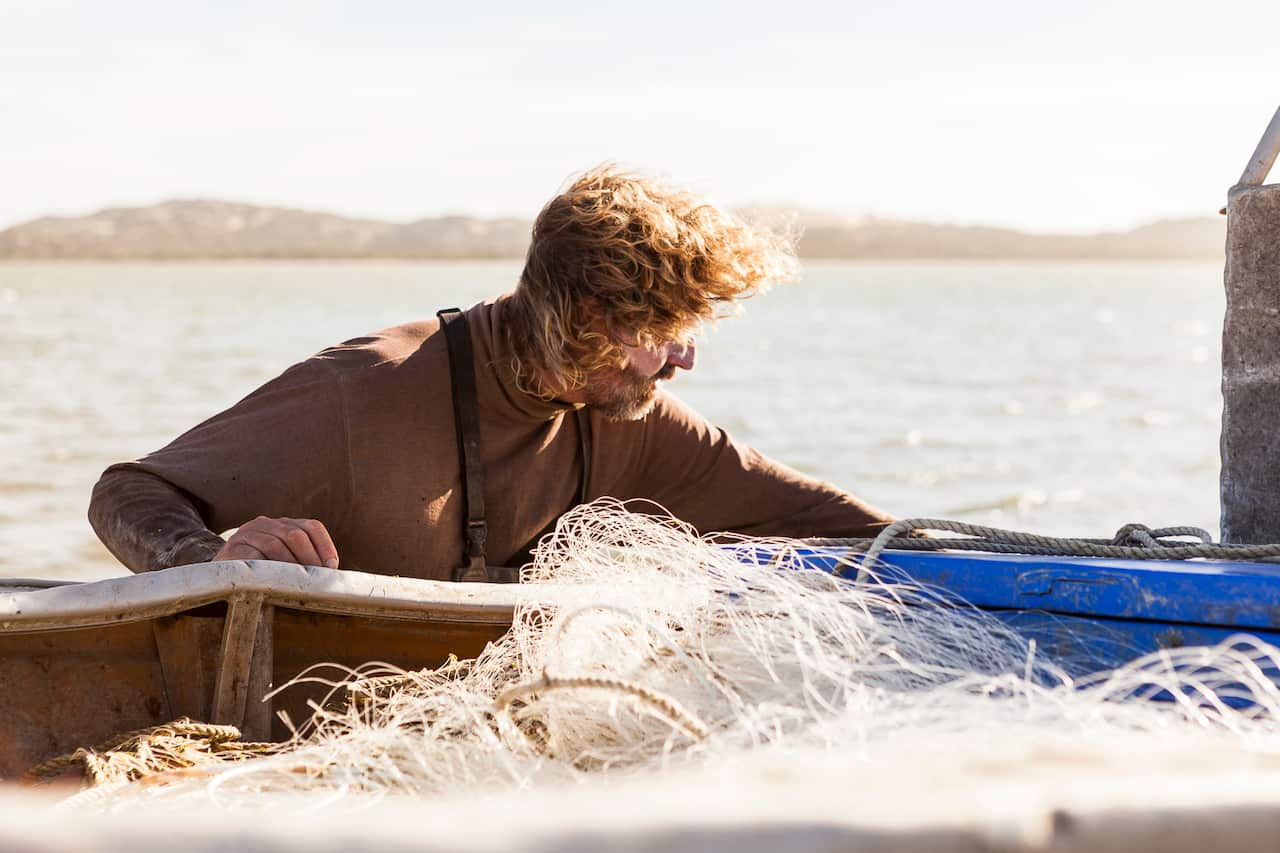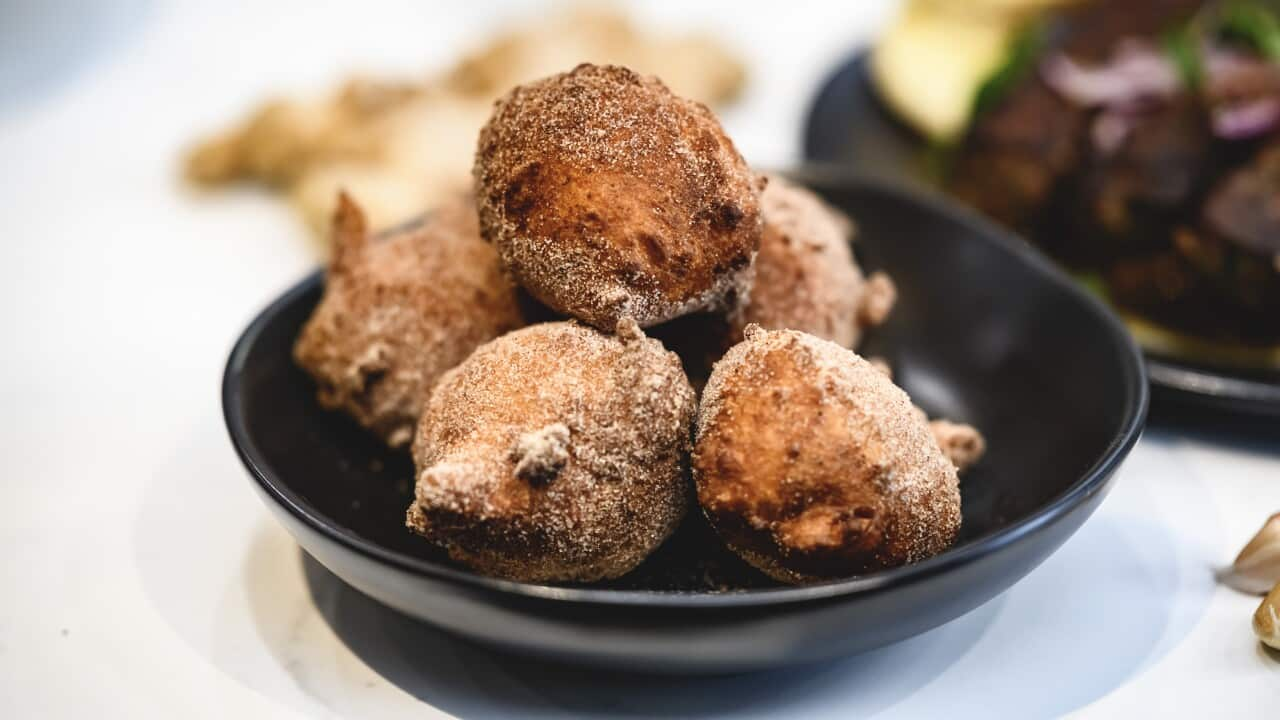--- Stream free on or catch the series weeknights on SBS Food at 7.00pm and 10.00pm. ---
While much of the discussion about "sustainable seafood" tends to focus on whether fishermen are catching too much fish, the people who are central to this issue are those reading this article: The consumers.
John Susman, a Sydney-based seafood consultant who started out in the industry in the mid-80s, says, "If they really want to be part of the sustainable seafood movement, consumers have more responsibility than the catcher, the fishmonger or even the chef to think and act with the bigger picture in mind." According to Susman, the Australian seafood industry's commitment to scientific research and best practice means Australians should be confident that local seafood will often be better for the planet than most imported products.
According to Susman, the Australian seafood industry's commitment to scientific research and best practice means Australians should be confident that local seafood will often be better for the planet than most imported products.

Sustainable seafood is not just about the way we fish but also about the way we eat. Source: Max Veenhuyzen
"What applies in regard to sustainable practices in other countries often doesn't apply here in Australia where our laws prohibit the unsustainable catching or growing of seafood," says Susman. "There is no commercial imperative for Australian fishers or aqua farmers to break the law."
Despite the local industry's good track record, there's still plenty that consumers can do to help build — and sustain — a viable, long-term seafood industry. Whether you're eating out or cooking at home, these five pointers will help you make better decisions when it comes to enjoying (Australian) seafood.
Avoid problematic seafood species
Shark's fin. New Zealand whitebait. Baby eels, known by various names globally including elvers in England and angulas in Spain. Today, thoughtful consumers are rethinking these delicacies, just as they are rethinking flake () at the local fish and chipper, or buying farmed Atlantic salmon (the monoculture farming of this introduced species has been the ).
While today's consumers have to consider more factors than ever when choosing seafood — such as bycatch and the environmental impact of various fishing methods, fish stock levels, and food miles — resources, such as the sustainable seafood app and website , offer valuable advice for when you're dining at restaurants and shopping for food.
Be open-minded
While fatty tuna belly might look good on the 'gram, consuming tuna (an apex predator and an important part of the ocean's food chain) en masse is not so good for seafood ecosystems. The counterweight to avoiding problematic seafood is shifting perceptions and seeking out species such as , or — underfished species that have a high population but are low in popularity. Environmental benefits aside, these lesser-appreciated species often represent sound value.
Don't think that by only buying the centre-cut portion of fish from a certified sustainable fishery that you have done the right thing.
Even better than seeking out specific fish varieties is going to your fishmonger, letting them know what you're planning on cooking, and then following their lead. Cooking a curry that calls for snapper? Consider swapping out for another white, firm-fleshed fish such as . While there might plenty of fish in the sea — for now, at least — scrupulous fish sellers will only sell fish they are happy to stand behind.
Veteran fish distributor Narito Ishii from Sydney's Wellstone Fresh Seafood, says, "If I don't like it [a fish], I don't really want to push to sell to the customer." His efforts over the years have seen the value of once-ignored species such as bonito and imperador rocket over the past decade. "If I don't want to eat it, why would I want to sell it? There's no heart."
LOOKING AFTER OUR OCEAN

The changing tide of Australia's scallop fishing industry
Think seasonally
"There are only 10 days in a year in which a type of fish tastes its best." So says a fish dealer at in the 2016 documentary, Tsukiji Wonderland. While this thinking sits at the more extreme end of the seasonal seafood spectrum, it reiterates the truism that fish, like fruit, vegetables, herbs, and most fresh ingredients, taste different throughout the year. , for instance, generally spawn over the summer months and are best eaten in winter when their bodies are fuller and creamiest. Just as ingredients such as truffles and asparagus are appreciated for their short seasons, look for similarly seasonal seafood treats. Australian salmon — not to be confused with farmed Atlantic salmon — are in abundance between summer and autumn when they complete their annual run across the country's south coast. The six-to-eight-week window in spring that is also cause for celebration.
Just as ingredients such as truffles and asparagus are appreciated for their short seasons, look for similarly seasonal seafood treats. Australian salmon — not to be confused with farmed Atlantic salmon — are in abundance between summer and autumn when they complete their annual run across the country's south coast. The six-to-eight-week window in spring that is also cause for celebration.

Eat seafood when the time is right. Source: Max Veenhuyzen
Support those doing the right thing
Many Australian fishermen were as aghast as you when they saw Seaspiracy. Or at least those who fish and work in a responsible manner. While big business (see "") relies heavily on economies of scale to sell seafood at low prices, small operators — be they fishermen, restaurants or fishmongers — don't have that luxury and need to charge more to keep afloat, figuratively and sometimes literally. If you're in a position to do so, spend your dollars with small businesses such as independent fishmongers carrying seafood from smaller producers, and restaurants committed to sourcing sustainably caught seafood. When dining out, look for dishes from fishermen such as Glen Hill from Coorong Wild Seafood — a one-man fishing operation in South Australia's Limestone Coast who catches flounder, mulloway and carp using nets with close to no bycatch.
If you're in a position to do so, spend your dollars with small businesses such as independent fishmongers carrying seafood from smaller producers, and restaurants committed to sourcing sustainably caught seafood. When dining out, look for dishes from fishermen such as Glen Hill from Coorong Wild Seafood — a one-man fishing operation in South Australia's Limestone Coast who catches flounder, mulloway and carp using nets with close to no bycatch.

Buy your seafood from those in the industry who work hard to fish sustainably. Source: Max Veenhuyzen
Use the whole fish
Bacon made from fish belly. Eyeball cracker. Fish sperm mortadella. , the chef-owner of Sydney seafood restaurant Saint Peter and a certified fish whisperer, has redefined the possibilities of seafood, largely by repurposing parts of the fish that are often discarded. While these creations might be a bridge too far for most (home) cooks, everyone should be utilising a nose-to-tailfin approach. According to Susman, making the most of every fish begins by buying it whole from a fishmonger and asking them to break it down in various ways, including by leaving the tail whole so it can be roasted; scaling the wings so they can be deep fried; and giving you the head so it can be split and grilled over charcoal. All the above is in addition to giving you fillets to pan fry and keeping the bones in for stock).
According to Susman, making the most of every fish begins by buying it whole from a fishmonger and asking them to break it down in various ways, including by leaving the tail whole so it can be roasted; scaling the wings so they can be deep fried; and giving you the head so it can be split and grilled over charcoal. All the above is in addition to giving you fillets to pan fry and keeping the bones in for stock).

Josh Niland works to encourage people to eat fish more sustainably. Source: Madeleine Ryan, Papaya
Susman points out, "Don't think that by only buying the centre-cut portion of fish from a certified sustainable fishery that you have done the right thing."
Photographs by Max Veenhuyzen











